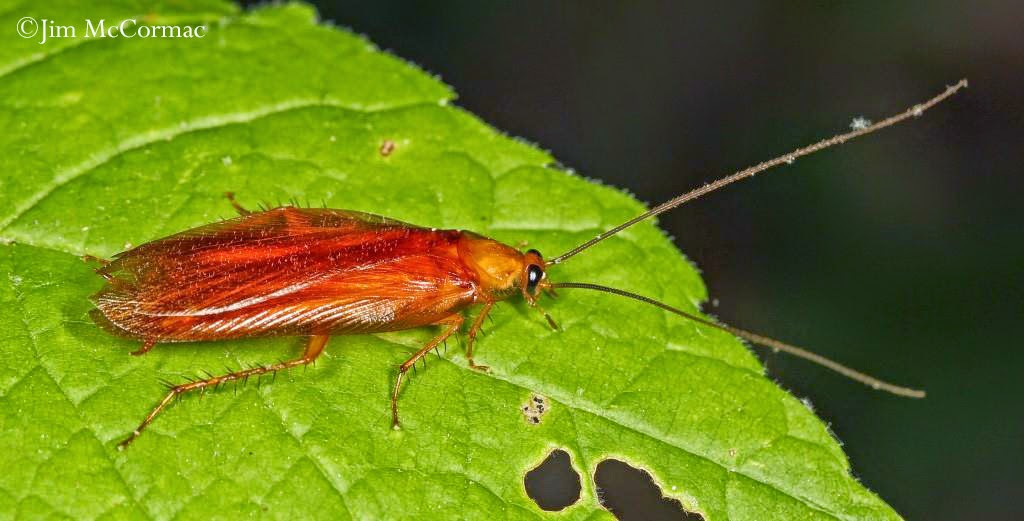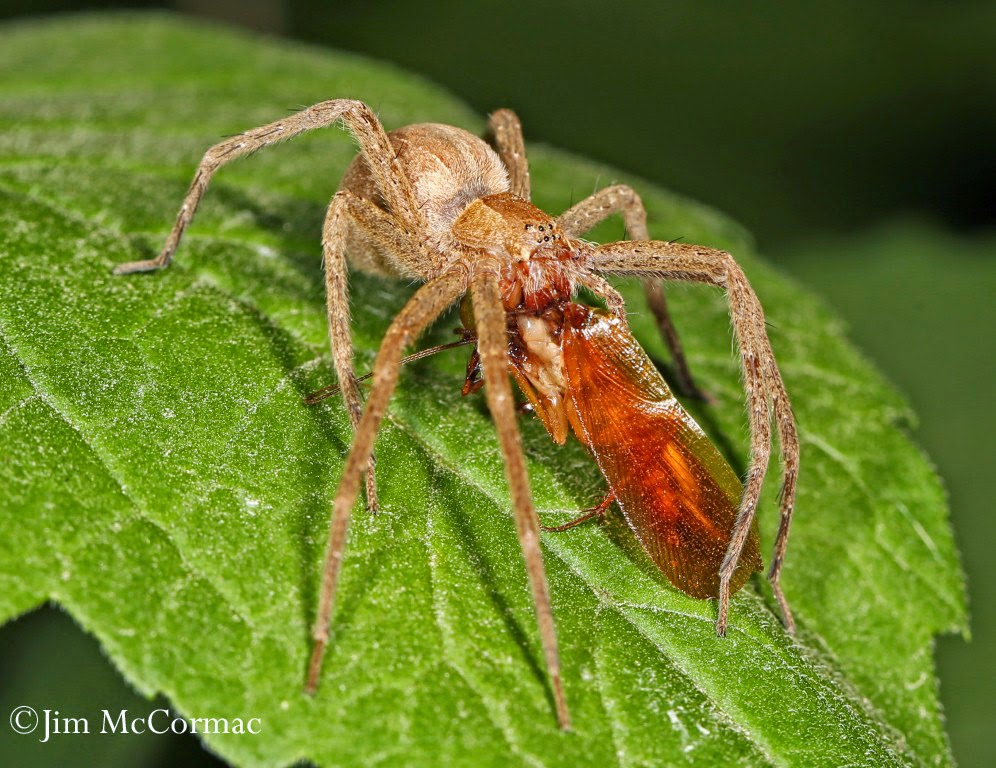A rather large wood roach of the genus Parcoblatta (I presume) investigates the surface of a leaf. John Howard and I were out late into the night last Saturday in Adams County, searching for nocturnal critters. We saw several of these roaches, which are common in southern Ohio woodlands. While they are in the same order (Blattodea) as the loathed pest cockroaches that infest dwellings, these are native roaches that live in natural habitats.
Nonetheless, if you are a sufferer of katsaridaphobia - fear of cockroaches - you're not going to like these things, harmless as they may be. The cockroaches don't care whether you like them or not. After all, Homo sapiens is just a short-term blip on the evolutionary time scale. From a cockroach's perspective, we have yet to prove ourselves. After all, humans in roughly our modern form and as described as H. sapiens only arose about 200,000 years ago. The cockroaches have been at the game of life for FAR longer than that. Fossilized ancestral roaches date back some 300 MILLION years, and more or less modern blattopterans have been around for some 145 million years. Cockroaches are successful, no doubt about it.
If, in addition to the aforementioned katsaridaphobia, you are also afflicted with arachnophobia, you're really not going to like this photo. John and I, however, were delighted to stumble upon this scene. A very large nursery web spider, Pisaurina mira, has captured a wood roach and is eating it. This is a scene that has played out for hundreds of millions of years, in one form or another. Spiders have an even more ancient history than do the roaches, having arisen some 400 million years ago. And as we can see from this photo, the spiders are most likely to dominate when it comes to roaches.
While more than a few people are turned off, often to a great degree, by spiders and roaches, you can't argue with success. These orders of animals have been around longer than many minds can comprehend, and they'll surely be on mothership earth long after Homo sapiens has departed.
If you've made it this far, I offer an antidote to the horrorshows above: a "cute" Northern Saw-whet Owl. Even though the owl is every bit the formidable hunter that the spider is, far more people like them.
Thanks to Dr. Rich Bradley for confirming the identity of the nursery web spider.
Nonetheless, if you are a sufferer of katsaridaphobia - fear of cockroaches - you're not going to like these things, harmless as they may be. The cockroaches don't care whether you like them or not. After all, Homo sapiens is just a short-term blip on the evolutionary time scale. From a cockroach's perspective, we have yet to prove ourselves. After all, humans in roughly our modern form and as described as H. sapiens only arose about 200,000 years ago. The cockroaches have been at the game of life for FAR longer than that. Fossilized ancestral roaches date back some 300 MILLION years, and more or less modern blattopterans have been around for some 145 million years. Cockroaches are successful, no doubt about it.
If, in addition to the aforementioned katsaridaphobia, you are also afflicted with arachnophobia, you're really not going to like this photo. John and I, however, were delighted to stumble upon this scene. A very large nursery web spider, Pisaurina mira, has captured a wood roach and is eating it. This is a scene that has played out for hundreds of millions of years, in one form or another. Spiders have an even more ancient history than do the roaches, having arisen some 400 million years ago. And as we can see from this photo, the spiders are most likely to dominate when it comes to roaches.
While more than a few people are turned off, often to a great degree, by spiders and roaches, you can't argue with success. These orders of animals have been around longer than many minds can comprehend, and they'll surely be on mothership earth long after Homo sapiens has departed.
If you've made it this far, I offer an antidote to the horrorshows above: a "cute" Northern Saw-whet Owl. Even though the owl is every bit the formidable hunter that the spider is, far more people like them.
Thanks to Dr. Rich Bradley for confirming the identity of the nursery web spider.


